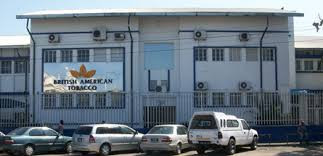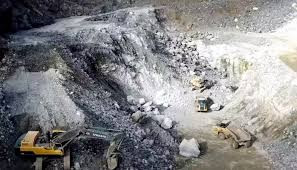
IT would appear new digital channels are being credited for driving sales numbers.It follows that as the channel numbers increase, there is an off-chance possibility of reaching out to many customers.
But the omnichannel distribution network could easily be a source of a higher cost-to-service distribution network.
This may unfortunately fly in the face of accepted wisdom that such a strategy enhances profitability all the time. It may run counter to that popular belief if cost to serve analysis is carried out.
The addition of new channels of distribution should only be adopted after a proper cost to serve analysis is done.
The cost to serve analysis enables supply chains to analyse the true cost of moving products from one touch point to another, thereby, making it easy to identify the most economic route to the end user.
The cost to serve distribution analysis will seek to consider all the relevant types of costs such as transportation, handling, warehousing, inventoryand administrative costs along the supply chain, establishing a basis for making objective decisions.
Often, they are inefficiencies, such as multiple handling and redundant stock levels at each distribution point. Non-monetary benefits, such as high delivery frequencies, small order multiples, direct-to-store deliveries can be part of the huge distribution cost that needs careful attention.
The cost to serve model will make it easier for the business to properly allocate resources for logistics and other marketing and sales efforts.
- Emotional intelligence imperative in supply chain management (II)
- Cost to serve analysis: The holy grail of profitability (I)
- Cost to serve analysis: The holy grail of profitability (11)
- Increased focus on supplier diversity is the way to go
Keep Reading
It is known and it will stay known that speed and agility is important in business, but not at any cost. Even with the most positive of intentions, the costs of maintaining a huge distribution physical footprint and maintaining adequate inventory levels at each distribution point can severely erode cost competitiveness and profitability of the business.
The total cost to serve distribution expenses should, therefore, be considered before increasing the clock speed of a supply chain.
Are there any benefits associated with the cost to serve model? Yes, they are plenty. It has been proven beyond reasonable doubt that supply chain cost to serve analysis is decisively important to increase operational efficiencies while promoting segmentation strategies that tailor make customer needs.
The model seeks to do away with a one size fits business strategy which may unfortunately under service some of your customers while over servicing the other segment.
There is often a tendency for measuring customer profitability using variables like gross margin when in fact such variables do not ordinarily take into consideration the little nuances of certain market segments.
It is also important for marketing personnel to work hand in glove with supply chain professionals in an effort to identify those market segments with the capacity to generate the greatest profit and the enabling factors that make them more favourable.
Such an understanding will drive the business to utilise same high profit yielding strategies to increase profitability for lesser profit yielding markets.
The cost to serve analysis helps organisations to peel the layers of the onion analysing both the income and expenditure patterns per each product category or customer segment.
This process will allow supply chain practitioners to cut that bone which adds little value to the customer, breaking down each stage of the supply chain into granular activities taking into consideration costs thereof.
The cost to serve model will guide supply chains to get out of the red zone and firmly get into the black side of the corporate ledgers.
The cost to serve analysis should not be confined to bottom line matters that seeks to balance books of accounts only.
The value of the model extends beyond the internal supply chain network. The model can also assist in making critical decisions about portfolio changes such as the launching of a new product or withdrawing a product from the market based on consumer sentiments.
The model will be useful for the management of the product’s lifecycles especially at the tail end of the lifecycle.
However, there is a caveat to cost to serve analysis. There is need to secure reliable, clean data which ordinarily forms the basis of the analysis.
There is need to gather as much granular data as is possible with a view to understand what is happening at the transactional level.
It is therefore sometimes very important to remove perception and emotions by looking at facts and figures. The cost to serve model may be very difficult to apply in a business environment where the operational systems produce incomplete and information flows that do not speak to each other.
Where organisations overly rely on manual-based systems, it may be very difficult to clearly have a clear line of sight of the costs incurred, leading to failure in the capturing of hidden costs.
Cost to serve analysis will give supply chain professionals visibility into the expenditure patterns at operational level enabling them to make informed decisions and bringing hidden costs to light.
Granular data will assist in identifying low margin customers, low margin products, high-cost processes ensuring that all your customers are profitable and assisting in the elimination of loss leaders in the supply chain.
Outlook
Cost to serve analysis will enable supply chain leaders to have the information they need, in context, to make more informed decisions, largely because the model provides a big-picture view of the supply chain from end to end.
The idea is to avoid supply chain slippery slopes that can produce morale-sapping surprises to the profitability curve.While the books of excellence in supply chain are still being written, cost to serve models could easily turn out to be the holy grail ofprofitability.
It is slowly becoming a new supply chain revelation that the cost to serve model is probably a table stake for profitability.There is need to measure profitability to the right level of detail to see what works and what could be improved.
It is a good pulse check as to whether things are going according to plan. It is a model for those businesses primed for the future.
Prevailing workplace narratives state that chasing revenue growth is important, but we must always remember to protect the profitability of the business.
Amid the pressure to keep operational costs down, the cost to serve analysis should not be regarded as a one-off business activity. It is an ongoing effort that pays dividends over timeas your team continually drives out costs and waste with a view to improve profitability.
From the books of accounts to management, workers, suppliers, customers and shareholders, everyone will be happy. But to maintain a sustainable cost structure, it may be very important to avoid a situation where a cost reduction in one supply chain area can easily result in a cost spike in another. The cost to serve model takes care of such situations.
But they are others who probably think that the cost to serve model is an unnecessary hype and continues to fall short of its great promise calling into question its relevance in enhancing profitability.
But the honest truth is that there is no blueprint for profitability. The cost to serve model is just another initiative of applying new lenses of scrutiny to the cost of doing business giving supply chain practitioners an up-close view of the profitability curve.
It is a typical model with the best of intentions.However, its adoption and use will not follow a linear trajectory, there will be stops and starts, circle-backs and false starts along the path to success.
For all intents and purposes, the art of perfection is never meant to be a one-day wonder. With time, the cost to serve model will leave the business in a competitive posture to grow.
It is a business initiative that is clothed with good intentions. In any case, in the current business environment, doing what you have always done, even if you do it so well is no longer enough.
After all, in a cut-throat world of business the next throat to be cut could easily be yours.
- Nyika is a supply chain practitioner based in Harare, Zimbabwe. — [email protected]











